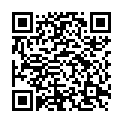|
|
|
| Module code: UI-ELT |
|
|
2V+1U+1LU (4 hours per week) |
|
5 |
| Semester: 2 |
| Mandatory course: yes |
Language of instruction:
German |
Assessment:
Exam
[updated 16.11.2023]
|
MAB_19_A_2.07.ELT (P241-0241, P241-0242) Mechanical and Process Engineering, Bachelor, ASPO 01.10.2019
, semester 2, mandatory course
MAB_24_A_2.07.ELT Mechanical and Process Engineering, Bachelor, SO 01.10.2024
, semester 2, mandatory course
UI-ELT (P241-0241, P241-0242, P251-0017, P251-0018) Environmental Technologies, Bachelor, ASPO 01.10.2021
, semester 2, mandatory course
UI-ELT (P241-0241, P241-0242, P251-0017, P251-0018) Environmental Technologies, Bachelor, ASPO 01.10.2023
, semester 2, mandatory course
UI-ELT (P241-0241, P241-0242, P251-0017, P251-0018) Environmental Technologies, Bachelor, SO 01.10.2025
, semester 2, mandatory course
|
60 class hours (= 45 clock hours) over a 15-week period.
The total student study time is 150 hours (equivalent to 5 ECTS credits).
There are therefore 105 hours available for class preparation and follow-up work and exam preparation.
|
Recommended prerequisites (modules):
None.
|
Recommended as prerequisite for:
UI-AMT Applied Metrology
UI-T-EN Energy Efficiency and Sustainability
[updated 28.03.2024]
|
Module coordinator:
Prof. Dr. Marc Deissenroth-Uhrig |
Lecturer: Prof. Dr. Marc Deissenroth-Uhrig
[updated 04.08.2023]
|
Learning outcomes:
After successfully completing this module, students will be familiar with the basic passive and active components of electrical engineering and understand their operating behavior and interaction. They will be familiar with the basics of electrical engineering and its connection to magnetism. They will observe the basic rules for handling electricity. Students will be able to perform basic electrical design tasks, understand electrical circuits and calculate simple networks. They will understand the differences between direct and alternating current systems.
Furthermore, students will be familiar with the basic structure and function of electrical machines. Based on the example of synchronous and asynchronous machines in motor and generator operation, they will be able to explain the function and power electronics required and select the appropriate machines.
[updated 16.11.2023]
|
Module content:
Electrical quantities and basic laws
Kirchhoff´s rules
Measuring current, voltage, power
DC circuits, calculating networks
Electric field, capacitor, capacity
Magnetic field
Magnetic field strength, magnetic flux density, magnetic flux
Ampère´s circuital law
Forces in the magnetic field
Faraday´s law of induction, Lenzs law
Self-induction, inductance
Generating stress by rotation and transformation
Eddy currents and applications
Alternating current circuits
Circuits with resistors, capacitors, inductors, resonant circuits
Active power, reactive power, apparent power, work
Three-phase systems
Semiconductor components Diodes, transistors and operational amplifiers
Electrical machines in motor and generator operation
Design and basic function of synchronous and asynchronous motors
Basic function of a frequency converter
[updated 16.11.2023]
|
Teaching methods/Media:
Lecture, descriptions of lab experiments;
Lab experiments with assistance where required,
Independently written lab reports in accordance with specifications on content and form
[updated 16.11.2023]
|
Recommended or required reading:
Hermann Linse, Rolf Fischer: Elektrotechnik für Maschinenbauer
Rudolf Busch: Elektrotechnik für Maschinenbauer und Verfahrenstechniker
Eckbert Hering, Jürgen Gutekunst, Rolf Martin: Elektrotechnik für Maschinenbauer
Eckbert Hering, Jürgen Gutekunst, Rolf Martin: Elektrotechnik für Ingenieure
G. Fliegel: : Elektrotechnik für Maschinenbauer
[updated 16.11.2023]
|

